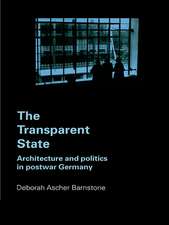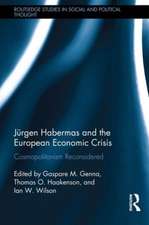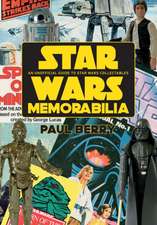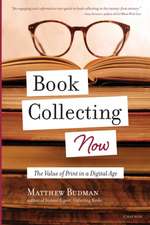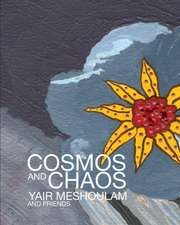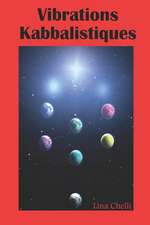How to Make the Body: Difference, Identity, and Embodiment: Visual Cultures and German Contexts
Editat de Jennifer Creech, Dr. Thomas O. Haakensonen Limba Engleză Paperback – 21 aug 2024
| Toate formatele și edițiile | Preț | Express |
|---|---|---|
| Paperback (1) | 192.30 lei 3-5 săpt. | |
| Bloomsbury Publishing – 21 aug 2024 | 192.30 lei 3-5 săpt. | |
| Hardback (1) | 540.58 lei 3-5 săpt. | |
| Bloomsbury Publishing – iun 2022 | 540.58 lei 3-5 săpt. |
Preț: 192.30 lei
Preț vechi: 249.87 lei
-23% Nou
Puncte Express: 288
Preț estimativ în valută:
36.81€ • 39.100$ • 30.94£
36.81€ • 39.100$ • 30.94£
Carte disponibilă
Livrare economică 31 martie-14 aprilie
Preluare comenzi: 021 569.72.76
Specificații
ISBN-13: 9781350194083
ISBN-10: 1350194085
Pagini: 264
Ilustrații: 32 color and 8 bw illus
Dimensiuni: 156 x 234 x 25 mm
Greutate: 0.39 kg
Editura: Bloomsbury Publishing
Colecția Bloomsbury Visual Arts
Seria Visual Cultures and German Contexts
Locul publicării:London, United Kingdom
ISBN-10: 1350194085
Pagini: 264
Ilustrații: 32 color and 8 bw illus
Dimensiuni: 156 x 234 x 25 mm
Greutate: 0.39 kg
Editura: Bloomsbury Publishing
Colecția Bloomsbury Visual Arts
Seria Visual Cultures and German Contexts
Locul publicării:London, United Kingdom
Caracteristici
Examines canonical objects and texts with a specific focus on "the body" and its relationship to difference and identity
Notă biografică
Jennifer L. Creech is Associate Professor of German, Affiliate Faculty in Film & Media Studies, and Associate Faculty in Gender, Sexuality, and Women's Studies at the University of Rochester, USA. She is the author of Mothers, Comrades and Outcasts in East German Women's Films (2016) and co-editor of Spectacle: German Visual Culture, Volume 2 (2015).Thomas O. Haakenson is Associate Professor in Critical Studies and Visual Studies at California College of the Arts, USA. He is co-editor of the book series Visual Cultures and German Contexts published by Bloomsbury. He serves as Vice President of the U.S. Fulbright Association's Chapter Advisory Board, as well as on the Advisory Board and on the Summer Workshop Program Committee for the Berlin Program for Advanced German and European Studies at the Freie Universität, Germany.
Cuprins
1. Jennifer L. Creech and Thomas O. Haakenson, "Introduction: How to Make the Body"2. Alison Stewart, "Arousal, the Bible, and Bruegel's Codpieces: The Male Body in Early Modern Visual Culture" 3. David Ciarlo, "The Construction of the Aryan Body in German Visual Advertising, 1908-33" 4. Jill Holaday, "Die Gruppe Zero: Transforming Trauma to Transcendence" 5.Ilka Rasch, "RAF Corpse Art: The Living Dead in the Work of Gerhard Richter, Ernst Volland, Astrid Proll and Andres Veiel" 6. Sebastian Heiduschke, "Penis-bodied Specimen in the Exhibit Körperwelten ('Body Worlds')" 7. Jennifer L. Creech, "For the Porn Connoisseur: Cinema Joy" 8. Zachary Fitzpatrick, "Orientalized Bodies at Work: Cultural Zaniness in Berlin's Sayonara Tokyo Revue" 9. Thomas O. Haakenson, "Ai Weiwei's Body in Berlin"10. Jamele Watkins, "Afrolocken: Natural Hair in German Literature and Media" 11. Faye Stewart, "Poppthority: The Politics of Dr. Bitch Ray's Bodily Interventions" 12. Lucy Ashton, "Becoming Invisible/ Against Visibility: Hito Steyerl's How Not to be Seen: A Fucking Didactic Educational. MOV File"
Recenzii
From biblical arousals to RAF corpse art; from Joy's feminist pornography to Dr Bitch Ray's bodily interventions, there is much to admire in this thought-provoking essay collection on the visual culture and politics of the body in real-world German contexts.
How to Make the Body is a rich, multi-faceted volume that demonstrates the value of focusing on the body, and embodiment, in examining various aspects of visual culture in 20th and 21st-century German contexts [.] and with a strong and welcome emphasis on feminist and queer approaches.
Engaging with a diverse array of events, texts, and representations of lived experience, How to Make the Body powerfully mobilizes a range of cutting-edge theoretical approaches to generate new understandings of embodiment vital to German Studies and beyond.
How to Make the Body is a rich, multi-faceted volume that demonstrates the value of focusing on the body, and embodiment, in examining various aspects of visual culture in 20th and 21st-century German contexts [.] and with a strong and welcome emphasis on feminist and queer approaches.
Engaging with a diverse array of events, texts, and representations of lived experience, How to Make the Body powerfully mobilizes a range of cutting-edge theoretical approaches to generate new understandings of embodiment vital to German Studies and beyond.
















